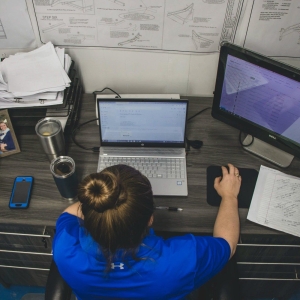Body Pump classes are a popular choice among fitness enthusiasts seeking a comprehensive, full-body workout. Developed by Les Mills, Body Pump combines weightlifting with high-repetition, low-weight exercises set to music, aiming to build strength and endurance. Here’s a detailed look at how Body Pump classes are conducted.
1. Introduction and Warm-Up
The beginning of a Body Pump class typically starts with an introduction and a warm-up session. The instructor greets the participants and provides an overview of the class structure, including the exercises and equipment needed. This is followed by a warm-up, which usually lasts around 5-10 minutes. The warm-up is crucial as it prepares the muscles and joints for the workout ahead, reducing the risk of injury. It involves light cardio and dynamic stretching exercises, often performed to an upbeat track to energize the participants.
Key Components:
- Introduction and overview of the class.
- Warm-up exercises such as light cardio and dynamic stretching.
- Use of light weights to prepare muscles for heavier lifting.
2. Main Workout: Track-Based Structure
The main part of a Body Pump class is divided into different tracks, each focusing on a specific muscle group. Each track lasts around 4-6 minutes and is designed to target areas such as the legs, chest, back, triceps, biceps, shoulders, and abdominals. The tracks are performed to music, with the rhythm dictating the pace of the exercises. This structure ensures a balanced workout, hitting all major muscle groups effectively.
Track Breakdown:
- Squats Track: Targets the legs and glutes with exercises like squats and lunges.
- Chest Track: Focuses on the chest muscles using exercises such as bench presses and push-ups.
- Back Track: Involves deadlifts, rows, and other exercises to strengthen the back.
- Triceps Track: Includes tricep dips, overhead tricep extensions, and other movements.
- Biceps Track: Utilizes curls and other exercises to work the biceps.
- Shoulders Track: Focuses on shoulder presses, lateral raises, and other shoulder exercises.
- Core Track: Targets the abdominals and obliques with exercises like crunches and planks.
3. Equipment and Weight Selection
Participants use a variety of equipment during a Body Pump class, primarily barbells and weight plates. Dumbbells, resistance bands, and step platforms may also be used for certain exercises. One of the key aspects of Body Pump is the ability to customize the weight load based on individual fitness levels. Instructors often provide guidance on weight selection, encouraging participants to challenge themselves while maintaining proper form.
Equipment Used:
- Barbells and weight plates.
- Dumbbells and resistance bands (optional).
- Step platforms for added intensity.
Weight Selection Tips:
- Start with lighter weights if you are a beginner.
- Gradually increase the weight as you build strength and confidence.
- Listen to the instructor’s guidance on appropriate weight selection for each track.
4. Instruction and Technique
Proper technique and form are emphasized throughout the class to prevent injuries and ensure effectiveness. The instructor demonstrates each exercise and provides cues on form, alignment, and breathing. Participants are encouraged to watch the instructor closely and make necessary adjustments to their technique. Instructors also walk around the class to provide individual feedback and support.
Instructor's Role:
- Demonstrate and explain each exercise.
- Provide cues on form, alignment, and breathing.
- Offer modifications and alternatives for different fitness levels.
- Give individual feedback and support.
5. Cool-Down and Stretching
The class concludes with a cool-down and stretching session to help the muscles recover and reduce post-workout soreness. This typically lasts around 5-10 minutes and involves static stretches for all the major muscle groups worked during the class. The cool-down is set to a slower, calming track, allowing participants to relax and unwind.
Cool-Down Components:
- Gentle stretching for major muscle groups.
- Breathing exercises to relax the body.
- Final words of encouragement and feedback from the instructor.
6. Class Atmosphere and Music
The atmosphere in a Body Pump class is energetic and motivating, driven largely by the music and the instructor’s enthusiasm. The playlist is carefully curated to match the pace and intensity of each track, creating a dynamic and engaging workout experience. The communal aspect of the class also fosters a sense of camaraderie among participants, further enhancing motivation.
Atmosphere Highlights:
- Energetic and motivating environment.
- Carefully curated playlist matching the workout intensity.
- Sense of camaraderie and support among participants.
Body Pump classes offer a structured, effective, and engaging way to build strength and endurance. From the warm-up to the cool-down, each component is designed to maximize results while ensuring safety. The track-based structure, emphasis on proper technique, and the motivating atmosphere make Body Pump a standout option for anyone looking to enhance their fitness routine. Whether you’re a beginner or an experienced lifter, Body Pump provides a comprehensive workout https://nabeautylandshut.com/body-pump-training-pumping/ that can be tailored to your individual needs and goals.






